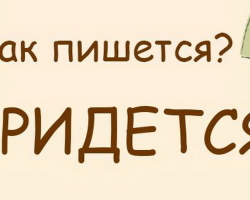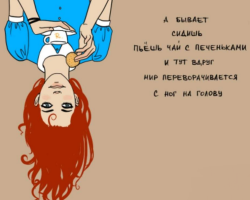This article will talk about "Jewish heaps." We will tell you what this is for the period and how it is connected with Easter.
Content
- What are "Jewish piles": origin, a brief explanation of the name
- Is there and what is the connection between the "Jewish heaps" and the holidays of Easter, Passover?
- When to expect and how to calculate Jewish piles in 2021-2031: Dates
- Why does the weather spoil on the "Jewish heaps" and cold?
- "Jewish heaps": folk signs, traditions and superstitions
- Video: What do we know about "Jewish heaps"?
To begin with, “Jewish piles” is a common, unofficial name. And this is not a holiday, but a phenomenon of nature. And why exactly heaps and Jewish, when to wait for their offensive and what is the connection between the bright Easter holiday, as well as what kind of folk signs for such a period are - we will tell about everything below.
What are "Jewish piles": origin, a brief explanation of the name
There is no such term as “Jewish piles” in any direction of the faith of mankind. This is a truly popular name among the inhabitants of Russia, Belarus and Ukraine. In the Western and other countries, they did not even hear about him.
In the common people, this is the name of the period 2 weeks before Easter, i.e. On the eve of the Palm Week. It is in this interval that the weather deteriorates, temperature changes, gusts of wind and rains are observed.
There are several versions of the origin of the term and they rely only on assumptions:
- The people believe that The weather during this period, as it were, "jumps on bumps." Initially, the name was appropriate, but later smoothly passed into “piles”. Why our ancestors did not know weather jumps, and they didn’t really think.
- But they compared the expression with the ride on the cart along a bumpy road (with a large number of pits and bumps). After all, you go along it and jump on the bumps, so the weather is not stable in the spring.
- Another version is related with lead, cumulus clouds, When frequent rain rainfalls are observed. After all, thick and dark clouds after the rain quickly diverge and go aside.
- The period of "Jewish heaps" coincides with the celebration of the Jews of the holiday of Passah, when the Jews are "dug", those. getting together.
- There is also an assumption that the name is associated with the time when Jews sit on heaps. But this is because of a very distorted Church Slavonic translation of the Jewish holiday Sukkot (a festival of heaps, not bumps). During this period, the Jews make meals in Sukka (hut, tent, heap). True, Sukkot falls in the fall, and Easter and “Jewish cooling” we are waiting in the spring. Therefore, this option is a little dubious.
Is there and what is the connection between the "Jewish heaps" and the holidays of Easter, Passover?
Immediately note that Easter and Passah are not the same holiday! Although the Slavs are often called Passah "Jewish Easter", which is extremely wrong!

Passah - This is a celebration of the liberation of the Jewish people from Egyptian slavery, which happened millennia before the birth of Christ. And the crucifixion and resurrection of Christ also falls out for this period, but because of the religious, let's say, solidarity, these holidays are never celebrated on the same day. After all, Jesus betrayed Judas (Jew).
On average, there should be an interval from 5 to 40 days between Peshah and Easter.
The main connection between "Jewish heaps" and spring holidays in the dates:
- Passah always falls out for the first spring full moon(March or April), i.e. On the 14th day of the month of spring Nisan. It lasts 7 days in Israel, and beyond it - 8.
- And Easter is counted from the first full moon of the first spring month after the spring equinox, which falls on March 20 or 21. And Easter is always noted only on Sunday!
It is with the onset of the first full moon, along with the Jewish (in the common Jewish) festival of Passah or a week after it, until Easter, the temporary interval is called "Jewish heaps/bumps." On average, this is 2 weeks, but every year this period is changing. But always during this period, as you know, the weather spoils and is characterized by frequent changes.
When to expect and how to calculate Jewish piles in 2021-2031: Dates
We have already found out that “Jewish heaps” are closely connected with Peshah and Easter. This is a period between these two holidays, so you need to calculate the date of the first full moon of the spring month after the equinox (date of Peshah) and count the first Sunday (Easter date).
Important: The Jews focus exclusively on the lunar calendar, Catholics - on the Gregorian calendar, but the Orthodox - on the Julian calendar, in addition to the lunar cycles. Therefore, Catholic Easter is on average a week earlier than the Orthodox. But it happens that this difference reaches 4, as in this 2021, or even 5 weeks.

We offer to take a look at the dates from 2021 to 2031:
| Year/name | Pesah, beginning | Catholic Easter | Orthodox Easter |
| 2021 | March 28 | April, 4 | May 2 |
| 2022 | April 16 | April 17th | April 24th |
| 2023 | April 6th | April 9 | April 16 |
| 2024 | April 22 | March 31 | 5 May |
| 2025 | April 23 | 20 April | 20 April |
| 2026 | April 2 | April 5 | April 12th |
| 2027 | April 22 | March 28 | 5 May |
| 2028 | April 11 | April 16 | April 16 |
| 2029 | March 31 | April 1 | April 8 |
| 2030 | April 18th | The 21st of April | April 28 |
| 2031 | April 8 | April 13th | April 13th |
In rare cases, Passah happens after Easter, but not Orthodox!
Why does the weather spoil on the "Jewish heaps" and cold?
It is customary to associate cooling with the Jewish holiday, naming weather changes in honor of the nationality of the inhabitants - "Jewish heaps." This is erroneous! This period simply coincides with the date of the celebration of Peshah.
It is known that atmospheric pressure is growing on the full moon, which attracts cold air flows and heavy rain clouds. This is observed not only in the European part of the continent and in Russia, but due to their religiosity, residents of other countries do not connect weather changes with Jews.
Important: The moon has a great influence on weather conditions! It is she who is the cause of the jumps in temperature, sharp fluctuations in sunny and rainy days, which are especially noticeable in the spring.
Why is it cold for "Jewish piles", or the visual impact of the phases of the moon:
- after the full moon until the last quarter (third phase), the weather is cold, more often dry and resembles autumn;
- from the last quarter to the new moon (fourth phase), frequent precipitation and strong cooling are observed, which is similar to winter weather;
- the first week after the New Moon and until the first quarter (first phase) warms the Earth, but it rains, as in the spring;
- and the second phase to the full moon is similar to the fly, when the temperature rises and the air becomes dry.
Of course, this is Conditional separation. But we annually observe the picture when in spring the weather often falls into extremes - from warm and clear days to sharp cooling with possible snow. In addition, such fluctuations associated with the phases of the moon are actually observed in other seasons, but why it is in the spring that more attention is focused on this.
"Jewish heaps": folk signs, traditions and superstitions

The main signs associated with "Jewish heaps":
- During the “Jewish heaps”, water deteriorates, so it must be thoroughly cleaned and boiled;
- If the dark, heap clouds gathered in the sky, it will rain in the evening;
- But the rainy the weather during this period, the happier and more productive the New Year will be;
- To attract wealth and luck to your side, it is useful to walk under the "Jewish" rain.
Traditions and superstitions among the people on a passionate week before Easter:
- on Monday, general cleaning begins to get rid of the old and unnecessary, which has accumulated over the winter;
- on Tuesday - make a supply of products to be full all year;
- on Wednesday, all power in water, so use it as much as possible for washing or cleaning;
- on Thursday - put yourself in order (not only to swim to the sunset); Haircut and nail care is useful to be healthy. It is very good to cut the baby for the first time on a clean Thursday - luck will pursue him in life;
- friday is a day to cleanse and combat bad habits. If you burn the tree on this day, then its ashes will help from alcoholism;
- saturday - to complete all matters (cleaning, baking cakes and painting eggs).






